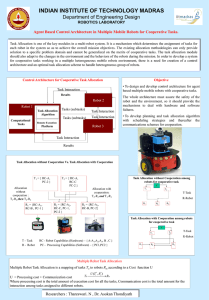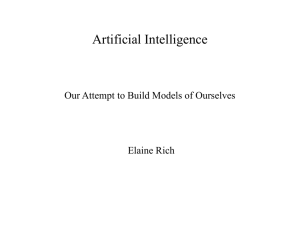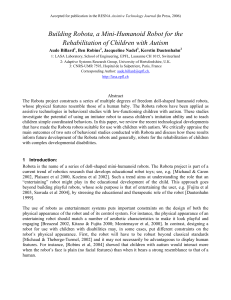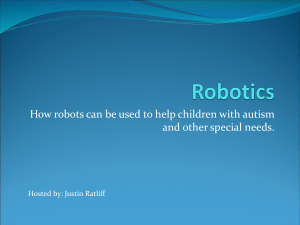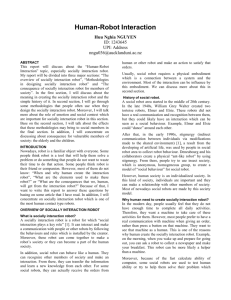Assistive Robotics
advertisement
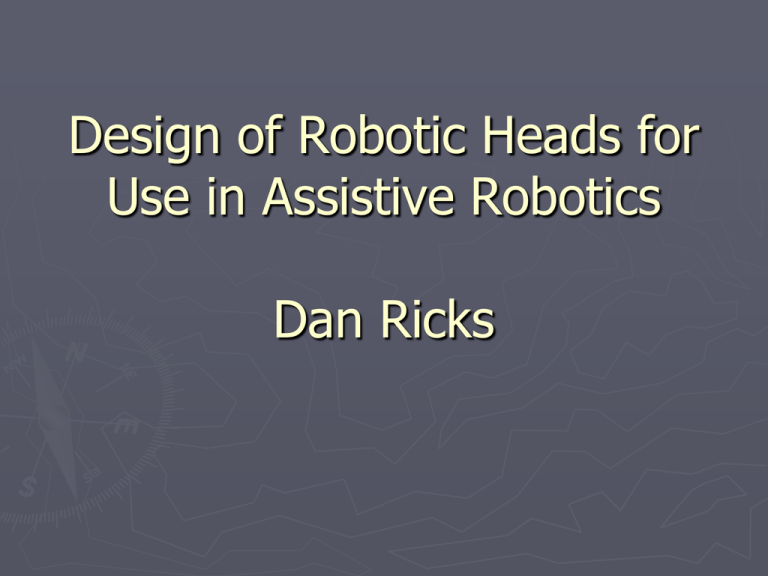
Design of Robotic Heads for Use in Assistive Robotics Dan Ricks Outline ► What Do Robots Look Like? ► Current ► What ► Input Robots Used in Autism Research Should Robots Look Like? HRI Robot Classifications Machine Realistic Mascot The Uncanny Valley Current Humanoid Autism Robots Robota Kaspar FACE Infanoid Keepon How They Chose Their Robots… ► Infanoid (Koyoto and Nagoya Universities) – The robot was built to show emotion, but little effort was put into covering the mechanical parts. ► Keepon (National Institute of Information and Communications Technology, Japan) – Tried to make it as simple as physically possible to avoid distractions. ► FACE (University of Pisa, Italy) – Used to teach the intricacies of human emotion, and so a very lifelike head was built. ► Robota (University of Hertfordshire) - Used limbs, head, and clothes from a doll. ► Kaspar (University of Hertfordshire) - After doing the study with Robota, they tried to make a robot that balanced looking human as well as being simple and plain. They used a CPR dummy mask for face. Does Appearance Matter? Case 1: Theatrical Robot Actor in Robot Costume Actor in Normal Clothes Touch Gaze Near Does Appearance Matter? Case 2: Robota Robota in Doll Clothes Billy Robota in Plain Clothes Don Andy Current Therapies They Do ► Act as the object of joint attention. ► Perform imitation activities. ► Play turn-taking games. ► Practice eye contact. ► Used as a toy in unstructured playtime. ► Enact and teach appropriate behavior in social situations. ► Make a facial emotion and have the child label it or match it to a picture of a human making that same face. ► Tell the child a social situation and have the child pick an emotion for the robot. How Can We Tell if They’re Interested? ► Ask Them ►Observationally ►Physiological Based Feedback Observation Based ► Put the child in a room with the robot performing some routine. ► Videotape Eye Gaze Touch Imitation Proximity and measure: Physiological Feedback ► Have the child wear a BioPac system. ► The child plays rigged games. ► A parent and a therapist identify whether a child likes the game, is bored, or anxious. ► Researchers associate these emotions with their physiological levels. ► Now the computer can automatically label their emotional states. The computer and therapist agree 81% of the time. This study was performed by the Marino Autism Research Institute in conjunction with Vanderbilt University Input ► What abilities should the face have? Ekman Faces Happy vs. Unhappy ► Which faces would be appropriate? ► Should we/how can we, test to see if they are appropriate?
